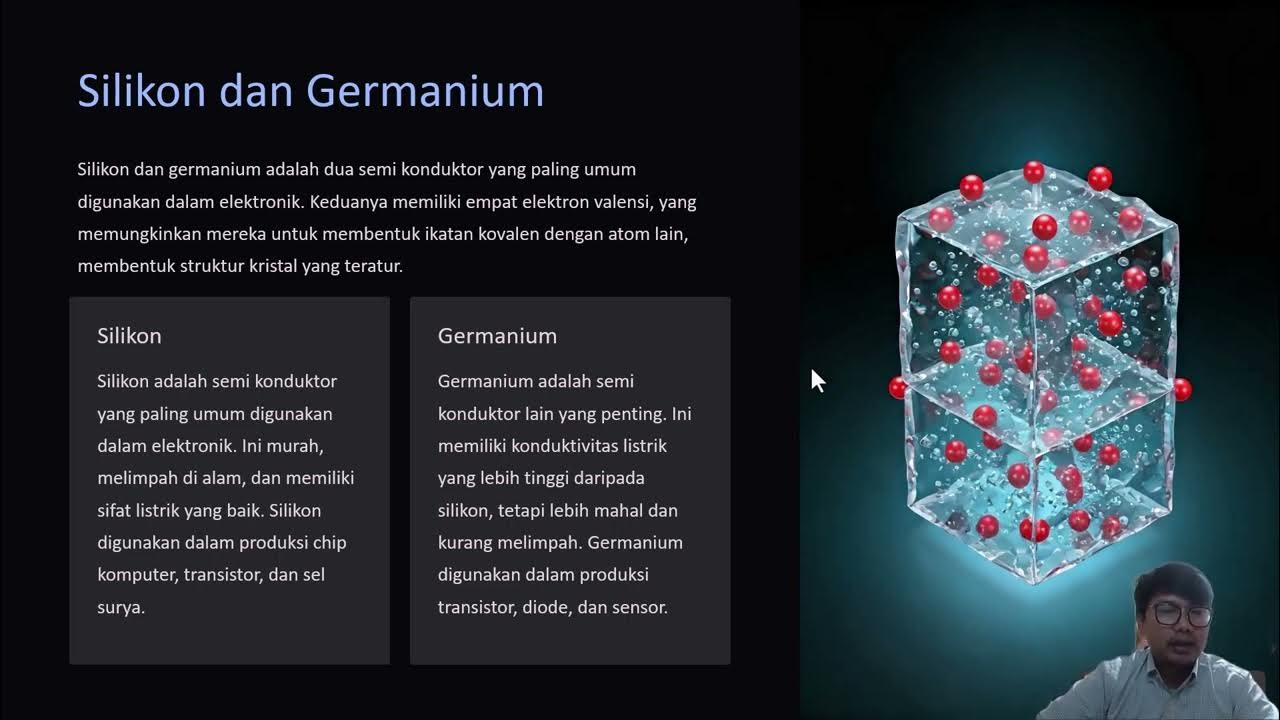Concept of Valency - Introduction | Atoms And Molecules | Infinity Learn
Summary
TLDRThis educational video script delves into the basics of atomic structure, focusing on the difference between hydrogen and helium, and the concept of valency. It explains how atoms, driven by the desire to achieve a stable electronic configuration, particularly the octet state, engage in chemical reactions. The script uses the relatable analogy of grabbing chocolates to illustrate how atoms strive to fill their outermost shell with a maximum of eight electrons. It sets the stage for a deeper exploration of valency and chemical bonding in subsequent content.
Takeaways
- 🔬 Hydrogen and helium differ in their reactivity; hydrogen can react with other elements, while helium is unreactive.
- 🌀 Helium, neon, and argon are noble gases that do not participate in chemical reactions due to their full outer electron shells.
- 📚 Valency is a key factor in determining whether elements will react with each other.
- ⚛️ Electronic configuration refers to the arrangement of electrons in an atom's shells, which is crucial for understanding chemical behavior.
- 🔋 The first shell of an atom can hold a maximum of two electrons, while subsequent shells can hold up to eight electrons.
- 🍫 The octet state, where the outermost shell has eight electrons, is considered a stable state for atoms, similar to how a person might want to hold as many chocolates as they can.
- 🌐 Oxygen, with six electrons in its outer shell, needs to gain two more electrons to achieve the octet state, leading to chemical reactions.
- 🔗 Chemical reactions occur when atoms share, borrow, or transfer electrons to achieve a stable electronic configuration.
- 💠 The formation of compounds is a result of atoms forming chemical bonds by sharing, accepting, or giving electrons.
- 🔑 Valency determines how many electrons an atom will share, accept, or donate during chemical reactions.
Q & A
What is the main difference between hydrogen and helium as mentioned in the script?
-The main difference is that hydrogen is capable of reacting with several other elements, while helium is unreactive and does not participate in chemical reactions.
Why do elements like helium and neon not participate in chemical reactions?
-Helium and neon, along with other noble gases, do not participate in chemical reactions because they have a complete valence shell, which makes them stable and unreactive.
What is valency and why is it important for chemical reactions?
-Valency is the combining power of an element to either gain, lose, or share electrons to achieve a stable electronic configuration. It is important for chemical reactions as it determines how elements will interact to form compounds.
What is electronic configuration and how is it related to the stability of an atom?
-Electronic configuration is the arrangement of electrons in an atom's shells. It is related to the stability of an atom because a stable configuration, like having a full outer shell (octet state), makes the atom less likely to participate in chemical reactions.
What is the octet state and why is it considered stable?
-The octet state is when an atom has eight electrons in its outermost shell. It is considered stable because it represents a complete and filled outer shell, which is less likely to engage in chemical reactions.
How does the electronic configuration of an atom influence its reactivity?
-The electronic configuration influences an atom's reactivity by determining how many electrons are in its outer shell. Atoms with incomplete outer shells tend to be more reactive as they seek to achieve a stable configuration.
Why can't oxygen have all eight electrons in its first orbital?
-According to the rules of electronic configuration, the first shell can only accommodate a maximum of two electrons. Therefore, oxygen, having a total of eight electrons, must have two in the first shell and six in the second to follow these rules.
How does oxygen achieve a stable state if it doesn't have eight electrons in its outermost shell?
-Oxygen achieves a stable state by sharing, gaining, or losing electrons through chemical reactions, which allows it to temporarily complete its outer shell and achieve the octet state.
What role does valency play in the formation of compounds?
-Valency determines the number of electrons an atom will share, gain, or lose during chemical reactions, which in turn leads to the formation of chemical bonds and compounds.
How do atoms decide how many electrons to share or transfer during chemical reactions?
-Atoms decide how many electrons to share or transfer based on their valency, which is influenced by their electronic configuration and the need to achieve a stable, full outer shell.
Outlines

Esta sección está disponible solo para usuarios con suscripción. Por favor, mejora tu plan para acceder a esta parte.
Mejorar ahoraMindmap

Esta sección está disponible solo para usuarios con suscripción. Por favor, mejora tu plan para acceder a esta parte.
Mejorar ahoraKeywords

Esta sección está disponible solo para usuarios con suscripción. Por favor, mejora tu plan para acceder a esta parte.
Mejorar ahoraHighlights

Esta sección está disponible solo para usuarios con suscripción. Por favor, mejora tu plan para acceder a esta parte.
Mejorar ahoraTranscripts

Esta sección está disponible solo para usuarios con suscripción. Por favor, mejora tu plan para acceder a esta parte.
Mejorar ahoraVer Más Videos Relacionados

FORMATION OF LIGHT ELEMENTS | BIG BANG NUCLEOSYNTHESIS | SCIENCE 11 - PHYSICAL SCIENCE

9th Science | Measurements of matter | Chapter 4 | Lecture 2 | maharashtra board |

3.3.3 - Radiação eletromagnética: Teoria Quântica - Emissão de luz por gases excitados (Bohr)

Atomic Structure: Discovery of the Neutron

A&P Tutorials - Basic Chemistry

Pengantar Semi Konduktor
5.0 / 5 (0 votes)
